Dmanisi
Online Biology Dictionary
|
|
EUGENE M. MCCARTHY, PHD
| < | Timeline | Chart | > |
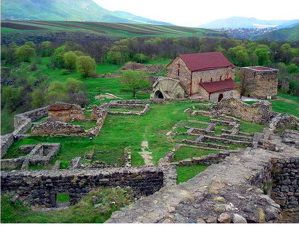
|
|
Ruins of Dmanisi |
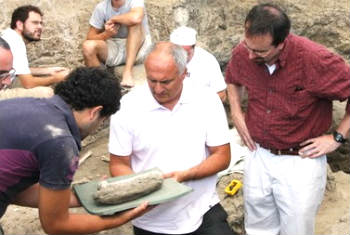
|
|
David Lordkipanidze (center) at the site |
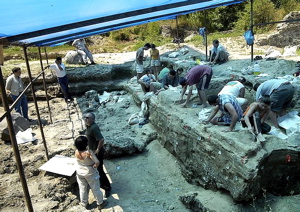
|
|
Excavation site. Photo: Georgian National Museum |
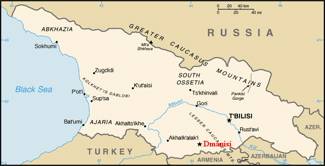
|
| Location of the discovery |
Dmanisi, in the Republic of Georgia, lies about 93 km southwest of Tbilisi, the capital of Georgia (see map >>). It is the site where a team led by paleoanthropologist David Lordkipanidze discovered the early hominid, Homo georgicus. The history of this village, which was once a town large enough to rate a cathedral, stretches back to the 9th century, but the discovery of its former hominid residents shows the same site was occupied by early humans as much as 1.8 million years ago.
Archaeological surveys of the site began in 1936, prompted by the existence of the ruins of the once much larger city, nearly annihilated by Mongol and Turkoman armies during the 14th and 15th centuries. Initially, archaeologists found many artifacts from the historical period. But, with time, the research focused increasingly on prehistoric remains.
In 1984, Georgian workers discovered crude stone tools of prehistoric origin and the hunt was on to find skeletal remains of the people who had made them. Scientists from other countries flocked to the site.
In 1991, human fossils did in fact come to light. They have since been assigned to Homo georgicus. In the years since, four different skeletons have been found and dated to approximately 1.8 mya. Homo georgicus is therefore one of the oldest hominids ever found outside Africa.
A sufficient number of individual specimens of Homo georgicus have now been recovered from the site to show that they were highly variable, so variable, in fact, that they call into question whether some of the named hominids dating to the same period (e.g., Homo habilis, Homo rudolfensis) should be treated separately. Indeed, it seems there may now be a trend toward a consensus that would lump all hominids dating to about 1.8 mya under the heading of Homo erectus.
Perhaps we are not from the apes alone?
Learn more >>
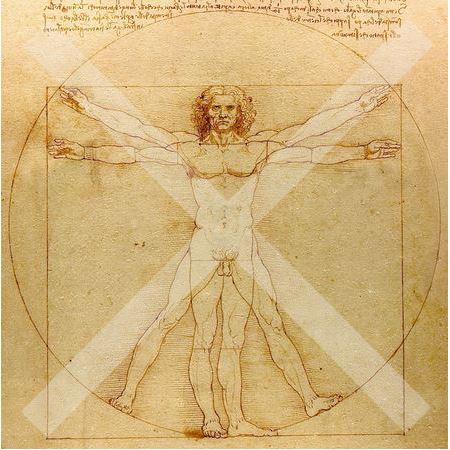
|
Australopithecus bahrelghazali >>
Most shared on Macroevolution.net:
Human Origins: Are we hybrids?
On the Origins of New Forms of Life
Mammalian Hybrids
Cat-rabbit Hybrids: Fact or fiction?
Famous Biologists
Dog-cow Hybrids
Georges Cuvier: A Biography
Prothero: A Rebuttal
Branches of Biology
Dog-fox Hybrids